Removing black mold on walls (painted or non-painted) can be quite challenging. If you have visible problem with it growing on the walls, there is a chance it is also growing inside of the walls, which usually means removing the wall. Most people don’t know exactly what black mold is, how it occurs or how to get rid of it if they do find it. Another important thing many people don’t realize is the dangers of molds can have on your health. It can cause breathing problems, allergies and other serious health problems. It is the last thing you need in your home, so it is important that you understand how to identify black mold and how to remove it.
Table of contents
What is black mold?
Simply put, molds are a microscopic living organism. A single spore is so tiny that it cannot be seen by the naked eye, which means that it may be in your home and behind a wall, without you even knowing it. If you can visibly see that you have a problem, it typically means it has been there for a long period of time, because it has time to grow and spread in an area large enough to be visible. It generally grows on porous materials, such as wood, drywall, fabric and carpets; however, it can also grow on non-porous materials such as tile. It needs the right conditions to grow. There has usually been some type of water damage and the area has stayed wet long enough for the spores to grow.
Possibl
e symptoms and health effects
When there is black mold inside of the walls, it often causes allergy-like symptoms, including watery eyes, sneezing and running nose. If anyone in your home has respiratory problems, such as asthma and those with a weakened immune system may have a higher risk of infections from exposure to the mold. Black mold can also cause more serious illness, such as sleep disorders, memory loss, bleeding lungs in infants and sudden infant death syndrome.
Other types of mold on walls
Black may be the image you picture in your mind when you think about mold on walls. These spores actually come in many different colors and each color presents a different type of mold. Grey, olive-green, brown, blue, green and white molds are all commonly found on walls. Each color is a different type of fungus, but all molds must be killed and cleaned out of the home immediately. Left undisturbed, any color of fungi spores will continue to grow and spread in damp areas. No matter what color of spores you are seeing, know that it is harmful to your lungs and health. Access the area and decide the best way to clean and disinfect the area.
What causes mold to grow?
Black mold, like most molds, thrive in conditions that are dark, unventilated and damp. The less the spores are disturbed the more they will grow; it can grow for months, even years behind a surface without being noticed. It may have started out in an area, such as behind or underneath appliance, anywhere there are pipes, especially leaking or sweaty pipes and/or around leaky windows. It can also seep in from the ground around your home. High humidity can also cause excess moisture which can develop into spores. Once it has started to grow it can spread on and into the walls.
![]()
oding="async" src="https://blackmoldcontrol.com/wp-content/uploads/how-to-remove-mold-from-walls.jpg" alt="how to remove mold from walls" width="540" height="285" class="aligncenter size-full wp-image-1410" srcset="https://blackmoldcontrol.com/wp-content/uploads/how-to-remove-mold-from-walls.jpg 540w, https://blackmoldcontrol.com/wp-content/uploads/how-to-remove-mold-from-walls-300x158.jpg 300w" sizes="(max-width: 540px) 100vw, 540px" />
How to identify mold on walls?
Before you can start to remove molds from a wall, it is important that you identify all areas that have been contaminated. The most common areas where it is found typically include the basement, bathroom, kitchen, garage and bedroom, especially a bedroom that is next to a bathroom or a bedroom next to the laundry room. You should look in areas that have a lot of dampness or moisture, such as the laundry room, basement and kitchen. You should also look at the grout between the bathroom tiles, above ceiling tiles that water stains, in any area where you smell mildew or there is a musty smell and any area that has been subjected to flooding. If you have water stains on the wall, or peeling or bubbling paint, it may be inside of the wall, which means you may need to remove the drywall to look behind it, especially if you smell a musty odor. Identifying black mold is fairly easy, because it is as the name suggests, black in color. It also usually has a slimy appearance.
Mold inside walls
Unfortunately, removing these harmful spores from a wall often includes having to remove it from behind or inside the wall as well. To remove it from inside the walls, you first have to remove the drywall. Discard all of the materials you remove and replace with new to ensure it has not been exposed to any spores. Once the affected outer materials have been removed, you also need to completely remove and discard all insulation in the affected area. If you notice it on the wall studs and they cannot be replaced, make sure to thoroughly scrub the studs, even behind them and encapsulate them to ensure it is gone and/or the spores are contained. Replace the drywall and paint or seal.
-to-detect-mold-in-walls">How to detect mold in walls?
You can detect mold by using a viable mold test kit. Sometimes it’s easy to detect mold without a test. If there is a musty smell in an area like the attic or bathroom, that may be enough to suspect a possible mold infestation. For mold that cannot be seen, a mold test kit can help detect mold from collected samples around the area. The first step to detecting mold is to inspect the area with both nose and eyes. If there is a strange smell or an area that appears to be have mold, you should then buy a test kit.
How to test for mold in walls?
Testing for mold in the walls is fairly easy if you follow these steps. Inspect damp an humid areas. Purchase a mold test kit and test if mold is present in your home. Send the mold test to the lab. See our 3 steps guide for all the details.
- Step 1: Inspect damp and humid areas.
Sometimes plumbing leaks can trigger mold to grow. If there is a musty smell, mold may have accumulated in a hidden spot such as behind your refrigerator or drywall.
- >Step 2: Purchase a mold test kit.
This costs approximately $50 and is well worth it. Testing can take a few days before determining if mold spores are present in the air.
- Step 3: Send the mold test to a lab.
A lab can help determine which type of mold is present within the walls.
How to clean mold from walls?
Hiring a professional is recommended. Many people are tempted to use bleach to clean black mold from their walls, but this can cause a variety of problems. Bleach often removes the color of mold, making it almost invisible. While the walls may look clean, they are still moldy and can cause health issues.
-to-remove-mold-from-walls">How to remove mold from walls?
When talking about the best way to remove it and the best way to prevent it, it is essential that you understand the answers to your questions depends on what part of the wall it is growing on and what type of material the wall is made of. For example, dealing with it on a concrete brick wall in the basement is much different than how you would deal with mold growing on and/or inside of an area made from drywall.
- Step 1: Clean all surfaces.
Trying to remove black mold from a wall can be more difficult than it seems. Before tackling the wall, make sure to thoroughly clean beforehand. Not only does the mold need to be killed and effectively removed, but the underlying membrane must also be cleared. Without removing the underlying membrane, the mold can easily return.
- Step 2: Decide if you need a HEPA vacuum.
If black mold is severe, HEPA vacuums may need to be used.
- >Step 3: Disinfect.
Air scrubbers, ozone machines and foggers can all be used to disinfect the surfaces after mold has been removed. This is an important step to keep the area clean and safe.
How to remove mold from drywall?
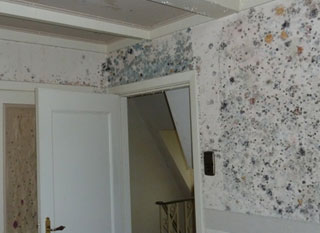 How the problem is handled on drywall depends on the condition of the sheet rock itself. If the material is unpainted or unsealed it is much more porous so it will absorb the spores right through to the back of the surface. In most situations, if you have a problem on the outside of sheetrock, it is probably on the inside as well. If you find it on unsealed sheetrock, the only thing you can do is remove the section that is affected and replace it. It is important to cut out a large enough section of the sheetrock to expose the wood behind it. Molds cannot be removed from insulation, so completely removing and replacing it is necessary.
How the problem is handled on drywall depends on the condition of the sheet rock itself. If the material is unpainted or unsealed it is much more porous so it will absorb the spores right through to the back of the surface. In most situations, if you have a problem on the outside of sheetrock, it is probably on the inside as well. If you find it on unsealed sheetrock, the only thing you can do is remove the section that is affected and replace it. It is important to cut out a large enough section of the sheetrock to expose the wood behind it. Molds cannot be removed from insulation, so completely removing and replacing it is necessary.
Remove mold from tile walls
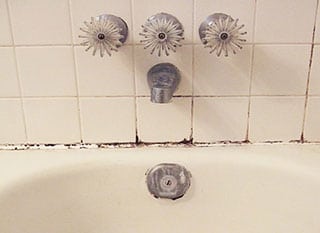 One of the most common places you will find black mold is on the tiles and grout in bathrooms, kitchens and the laundry room. The good news is that tile is a non-porous surface, so it is one of the easiest places for removing it. The grout, if it has been sealed, cleaning will be much easier.If the grout is unsealed, it can be removed with cleaning, but it just requires a little more elbow grease than if it had been sealed.
One of the most common places you will find black mold is on the tiles and grout in bathrooms, kitchens and the laundry room. The good news is that tile is a non-porous surface, so it is one of the easiest places for removing it. The grout, if it has been sealed, cleaning will be much easier.If the grout is unsealed, it can be removed with cleaning, but it just requires a little more elbow grease than if it had been sealed.
How to
Remove mold from tile and grout walls?
- Use a stiff scrub brush and a household cleaner to thoroughly scrub the mold off of the tiles and grout.
- If there are still stains on the grout after cleaning, you can use bleach or hydrogen peroxide to fade the stains. Apply the bleach or peroxide to the grout and let it sit for about 10 minutes.
- Another way to clean both the tile and the grout is with baking soda. Mix the baking soda with water to make a paste, use a cloth to spread the paste and the tile and a toothbrush to scrub on the grout.
- Regardless of which cleaning solution you choose, make sure to thoroughly rinse the tile and grout with water and dry completely.
- Apply a grout sealer to reduce the risk of future growth.
Remove mold from brick walls
Exterior brick surfaces benefit from the sunlight, so make sure all brick walls have good exposure. The brick should be kept dry and trim all overgrown plants. If you have a problem on the exterior of your home, it is best to use oxygen bleach as opposed to chlorine bleach.
How to
remove mold from brick walls?
Remember to wear protective clothing, gloves and eyewear when cleaning. Simply mix ½ cup of oxygen bleach with 1-gallon of warm water and mix well. Sponge the mixture onto the brick and use a stiff-bristled brush or push broom. Allow the mixture to sit for 30-minutes, and then rinse with a garden hose.
Remove mold from concrete and cement walls
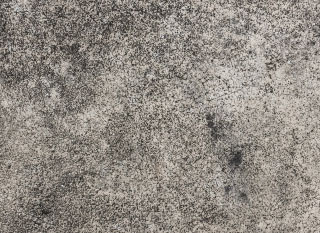 Removing black mold from concrete or cement walls is fairly simple. However, in some situations, it may be difficult to completely remove all traces of it, especially if it has gotten deep into the concrete. In this situation, it may be necessary to apply an encapsulation to help seal in any remaining traces of spores, which will prevent it from growing and spreading.
Removing black mold from concrete or cement walls is fairly simple. However, in some situations, it may be difficult to completely remove all traces of it, especially if it has gotten deep into the concrete. In this situation, it may be necessary to apply an encapsulation to help seal in any remaining traces of spores, which will prevent it from growing and spreading.
How to remove mold from concrete walls?
- Fill a bucket with 1-gallon of warm water and add ½ cup of liquid laundry detergent.
- Dip a scrub brush or a push broom into the cleaning solution and scrub the concrete to remove it.
- Rinse the concrete wall with a garden hose and allow it to air dry.
- Empty the bucket and fill with a mixture of 1-gallon warm water and ¼ cup of bleach.
- Apply to the concrete with a sponge or sponge mop and allow to sit for 20-30 minutes.
- Rinse completely and allow to air dry.
Remove mold from plaster walls
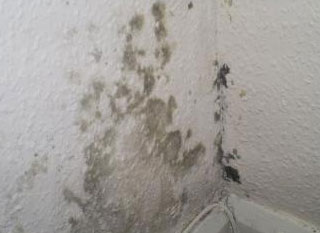 Under the right conditions, plaster can absorb a large amount of water and if the water is allowed to sit, black mold may appear. Cleaning a plaster wall will help to temporarily remove the problem, but to prevent the risk of it returning and/or spreading, it’s best to improve the air circulation with a fan or install a dehumidifier.
Under the right conditions, plaster can absorb a large amount of water and if the water is allowed to sit, black mold may appear. Cleaning a plaster wall will help to temporarily remove the problem, but to prevent the risk of it returning and/or spreading, it’s best to improve the air circulation with a fan or install a dehumidifier.
How to
remove mold from plaster?
- Use a non-ammonia based soap, mixed with water
- Dip a stiff bristle brush or push broom into the cleaning solution and scrub the plaster, using a “W” motion (similar to the motion used while painting).
- Using a garden hose for large exterior walls or a sponge for smaller interior walls, thoroughly rinse the wall.
- Allow exterior walls to air dry and use a large bath towel to dry interior walls.
Remove mold from wallpaper
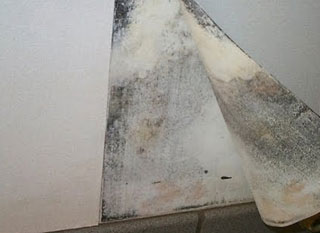 Bathroom wallpaper or an adjoining bedroom, where moisture is combined with the paper and glue (molds love to feed on both) is a prime target for black mold. Fortunately, you can usually remove the problem in a few simple steps.
Bathroom wallpaper or an adjoining bedroom, where moisture is combined with the paper and glue (molds love to feed on both) is a prime target for black mold. Fortunately, you can usually remove the problem in a few simple steps.
How to remove mold from wallpaper?
- In a spray bottle, combine equal parts of water and a mild detergent.
- Spray the affected area and scrub until the spots are gone.
- Allow the surface of the treated area to dry completely. If possible run a fan to help speed up the drying process.
- Ventilation is the last and most crucial step, especially in areas where there is continuous moisture. Thoroughly ventilating the room, especially the bathroom after every shower, will help limit growth and spreading of the spores.
If
you have thoroughly cleaned the surface of the wallpaper, but still smell a moldy odor, you may need to look behind the wallpaper. Lift a corner, near the floorboard or other out-of-sight area to look behind the wallpaper. Keep in mind that removing the wallpaper can lead to a large release of spores, so before removing all of it, consider hiring a remediation company.
Remove mold from wood walls
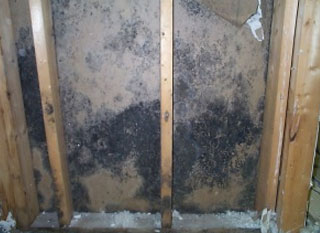 In most situations, wood walls can remain in place after they have been cleaned, but it is important to take the appropriate steps to clean and seal the area.
In most situations, wood walls can remain in place after they have been cleaned, but it is important to take the appropriate steps to clean and seal the area.
How to remove mold from wood walls?
- Mix 1-gallon of warm water and ½ cup of liquid detergent.
- Use a stiff scrub brush to remove the mold.
- Rinse well with clean water and allow to air dry. Using a fan will help to speed up the drying time and prevent water from absorbing into the wood.
- After it all has been removed from the wood, use a HEPA vacuum in the surrounding area to make sure there aren’t any spores lingering in the area.
- Use a fungicidal sealant, paint or sealer to seal the surface and prevent future growth.
Remove mold from cinder block walls
 If it is growing on the surface of painted cider block in the basement or cinder block in the crawlspace, simply clean it using a good bathroom cleaner. Once the cinder block has been thoroughly cleaned, repaint cinder block using a paint that has an antimicrobial additive added to the paint. Since cinder block is often used in basements, so it the most important thing to do is to stop the moisture from seeping through the cinder block by using a waterproofing system on the walls.
If it is growing on the surface of painted cider block in the basement or cinder block in the crawlspace, simply clean it using a good bathroom cleaner. Once the cinder block has been thoroughly cleaned, repaint cinder block using a paint that has an antimicrobial additive added to the paint. Since cinder block is often used in basements, so it the most important thing to do is to stop the moisture from seeping through the cinder block by using a waterproofing system on the walls.
Can mold grow inside cinder block?
Yes. Since mold typically grows where there is moisture, basements with cinder block walls can have mold growth. Mold that grows in cinder blocks is just as hazardous as mold that grows on organic material such as wood or textiles.


 How the problem is handled on
How the problem is handled on  One of the most common places you will find black mold is on the tiles and grout in bathrooms, kitchens and the laundry room. The good news is that tile is a non-porous surface, so it is one of the easiest places for removing it. The grout, if it has been sealed, cleaning will be much easier.If the grout is unsealed, it can be removed with cleaning, but it just requires a little more elbow grease than if it had been sealed.
One of the most common places you will find black mold is on the tiles and grout in bathrooms, kitchens and the laundry room. The good news is that tile is a non-porous surface, so it is one of the easiest places for removing it. The grout, if it has been sealed, cleaning will be much easier.If the grout is unsealed, it can be removed with cleaning, but it just requires a little more elbow grease than if it had been sealed.  Removing black mold from
Removing black mold from  Under the right conditions, plaster can absorb a large amount of water and if the water is allowed to sit, black mold may appear. Cleaning a plaster wall will help to temporarily remove the problem, but to prevent the risk of it returning and/or spreading, it’s best to improve the air circulation with a fan or install a dehumidifier.
Under the right conditions, plaster can absorb a large amount of water and if the water is allowed to sit, black mold may appear. Cleaning a plaster wall will help to temporarily remove the problem, but to prevent the risk of it returning and/or spreading, it’s best to improve the air circulation with a fan or install a dehumidifier. Bathroom wallpaper or an adjoining bedroom, where moisture is combined with the paper and glue (molds love to feed on both) is a prime target for black mold. Fortunately, you can usually remove the problem in a few simple steps.
Bathroom wallpaper or an adjoining bedroom, where moisture is combined with the paper and glue (molds love to feed on both) is a prime target for black mold. Fortunately, you can usually remove the problem in a few simple steps. In most situations,
In most situations,  If it is growing on the surface of painted cider block in the basement or cinder block in the crawlspace, simply clean it using a good bathroom cleaner. Once the cinder block has been thoroughly cleaned, repaint cinder block using a paint that has an antimicrobial additive added to the paint. Since cinder block is often used in basements, so it the most important thing to do is to stop the moisture from seeping through the cinder block by using a waterproofing system on the walls.
If it is growing on the surface of painted cider block in the basement or cinder block in the crawlspace, simply clean it using a good bathroom cleaner. Once the cinder block has been thoroughly cleaned, repaint cinder block using a paint that has an antimicrobial additive added to the paint. Since cinder block is often used in basements, so it the most important thing to do is to stop the moisture from seeping through the cinder block by using a waterproofing system on the walls.